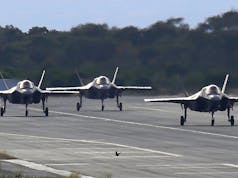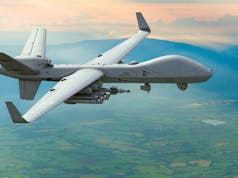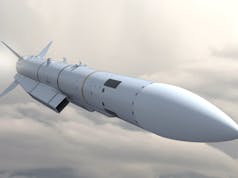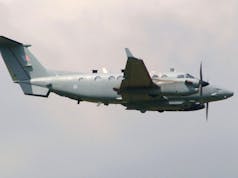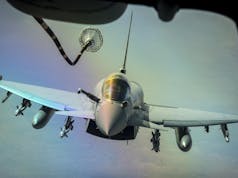A Reaper remotely piloted aircraft provided over watch to Iraqi ground forces clearing positions in northern Iraq on Saturday.
A number of Islamic State fighters, armed with rocket-propelled grenades, were active in the area, but were tracked down by the Reaper’s crew using the aircraft’s very capable surveillance sensors.
Three successful attacks were conducted using the Reaper’s own Hellfire missiles, and the Reaper also made possible a further five attacks by coalition fast jets, which accounted for other groups of fighters, two vehicles and a mortar team.
Operation Shader is the operational code name given to the British participation in the ongoing military intervention against the Islamic State.
The operation began in Iraq on the 26th of September 2014, following a formal request for assistance by the Iraqi government.
Prior to this, the Royal Air Force had been engaged in a humanitarian relief effort over Mount Sinjar, which involved multiple aid airdrops by transport aircraft and the airlifting of displaced refugees.
By October 2014, the intervention had extended onto Syria with the Royal Air Force only mandated to conduct surveillance flights over the country.
In December 2015, the House of Commons approved British airstrikes against IS in Syria. The UK is one of several countries directly involved in the ongoing Syrian conflict that started in March 2011, utilising Tornado, Typhoon and Reaper aircraft.
By June 2016, the Ministry of Defence had announced that over 1,000 personnel were engaged in theatre and that the Royal Air Force had conducted around 900 airstrikes, flying over 2,200 sorties, killing almost 1,000 Islamic State fighters.



